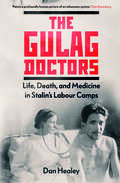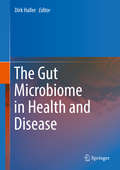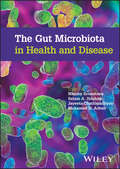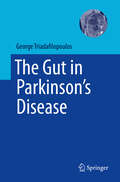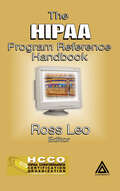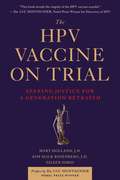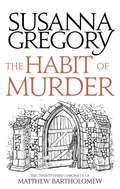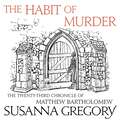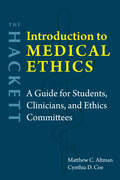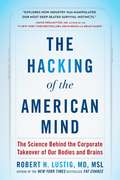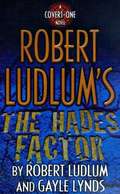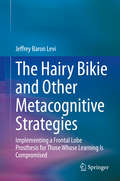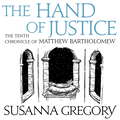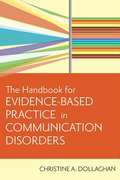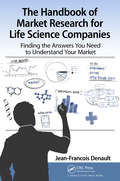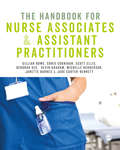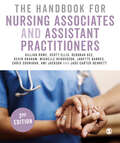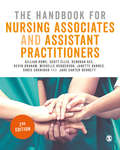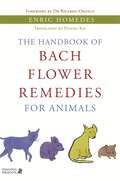- Table View
- List View
The Gulag Doctors: Life, Death, and Medicine in Stalin's Labour Camps
by Dan HealeyA pioneering history of medical care in Stalin&’s Gulag—showing how doctors and nurses cared for inmates in appalling conditions A byword for injustice, suffering, and mass mortality, the Gulag exploited prisoners, compelling them to work harder for better rations in shocking conditions. From 1930 to 1953, eighteen million people passed through this penal-industrial empire. Many inmates, not reaching their quotas, succumbed to exhaustion, emaciation, and illness. It seems paradoxical that any medical care was available in the camps. But it was in fact ubiquitous. By 1939 the Gulag Sanitary Department employed 10,000 doctors, nurses and paramedics—about 40 percent of whom were prisoners. Dan Healey explores the lives of the medical staff who treated inmates in the Gulag. Doctors and nurses faced extremes of repression, supply shortages, and isolation. Yet they still created hospitals, re-fed prisoners, treated diseases, and &“saved&” a proportion of their patients. They taught apprentices and conducted research too. This groundbreaking account offers an unprecedented view of Stalin&’s forced-labour camps as experienced by its medical staff.
The Gut Microbiome in Health and Disease
by Dirk HallerThe book provides an overview on how the gut microbiome contributes to human health. The readers will get profound knowledge on the connection between intestinal microbiota and immune defense systems. The tools of choice to study the ecology of these highly-specialized microorganism communities such as high-throughput sequencing and metagenomic mining will be presented. In addition the most common diseases associated to the composition of the gut flora are discussed in detail. The book will address researchers, clinicians and advanced students working in biomedicine, microbiology and immunology.
The Gut Microbiota in Health and Disease
by Jayeeta Chattopadhyay Salam A. Ibrahim Nimmy Srivastava Mohamed H. ArbabThe Gut Microbiota in Health and Disease An accessible overview of the varied microorganisms of the gut The human gut contains an extraordinary array of microorganisms existing in intricate symbiosis with the body. The gut microbiota plays a crucial role in maintaining overall gut health and warding off disease. With up to 15% of the global population suffering from Irritable Bowel Syndrome (IBS) caused by improper composition of gut microbiota, understanding these organisms and their vital contribution to human health has never been more important. The Gut Microbiota in Health and Disease provides a concise, accessible introduction to gut microbiota and their contribution to human health. It offers not only an overview of the relevant microorganisms and their roles in the body, but also extended discussion of diseases caused by gut dysbiosis. It presents a crucial window into this growing body of research into a critical area of overall human health. The Gut Microbiota in Health and Disease, readers will also find: Detailed analysis of dysbiotic health conditions including obesity, diabetes, and more Thorough treatment of molecular techniques for the analysis gut microbial composition Discussion of the lowering diversity of bacteria in the gut and the corresponding impact on global health The Gut Microbiota in Health and Disease is essential for researchers and clinicians working in immunology, gastroenterology, clinical microbiology, and related fields, as well as for clinical dieticians and postgraduate or medical students studying in these areas.
The Gut in Parkinson's Disease
by George TriadafilopoulosAt present, there is minimal and misleading knowledge of gastrointestinal dysfunction in Parkinson's disease among primary neurologists and gastroenterologists. This book reviews our current understanding of the GI involvement in PD, as many experiments suggest that the gut might be the site where the disease starts. Also discussed is how the gut dysfunction causes symptoms from the top (mouth) to the bottom (anal canal), and because of their frequency and severity, they contribute to disease progression and disability. In addition, the book covers the negative effects of small intestinal bacterial overgrowth (SIBO) and of a frequently silent stomach infection by Helicobacter pylori infection on the absorption of antiparkinsonian drugs, in turn causing motor fluctuations and inadequate treatment response. The Gut in Parkinson's Disease serves as a bridge between patients, their movement disorders specialists, and other health care providers who currently provide compartmentalized and at times conflicting care for such needy patients. The book distills the clinical and research experience of the author, who -as a Clinical Professor of Medicine (Gastroenterology) at Stanford University School of Medicine over the past 20 years- managed hundreds of patients with Parkinson’s Disease suffering from gut manifestations.
The HIPAA Program Reference Handbook
by Ross A. LeoManagement and IT professionals in the healthcare arena face the fear of the unknown: they fear that their massive efforts to comply with HIPAA requirements may not be enough, because they still do not know how compliance will be tested and measured. No one has been able to clearly explain to them the ramifications of HIPAA. Until now.The H
The HPV Vaccine On Trial: Weighing the Evidence
by Mary Holland Kim Mack Rosenberg Eileen IorioA Groundbreaking Guide to the HPV Vaccine and the Science, Safety, and Business Behind It Cancer strikes fear in people’s hearts around globe. So the appearance of a vaccine to prevent cancer–as we are assured the human papillomavirus (HPV) vaccine will–seemed like a game-changer. Since 2006, over eighty countries have approved the vaccine, with glowing endorsements from the world’s foremost medical authorities. Bringing in over $2.5 billion in annual sales, the HPV vaccine is a pharmaceutical juggernaut. Yet scandal now engulfs it worldwide. The HPV Vaccine on Trial is a shocking tale, chronicling the global efforts to sell and compel this alleged miracle. The book opens with the vaccine’s invention, winds through its regulatory labyrinths, details the crushing denial and dismissal of reported harms and deaths, and uncovers the enormous profits pharma and inventors have reaped. Authors Holland, Mack Rosenberg, and Iorio drill down into the clinical trial data, government approvals, advertising, and personal accounts of egregious injuries that have followed in countries as far-flung as Japan, Australia, Colombia, India, Ireland, the U.K. and Denmark. The authors have written an unprecedented exposé about this vaunted vaccine. Written in plain language, the book is for everyone concerned – parents, patients, doctors, nurses, scientists, healthcare organizations, government officials, and schools. Ultimately, this book is not just about the HPV vaccine, but about how industry, government, and medical authorities may be putting the world’s children in harm’s way.
The Habit of Murder: The Twenty Third Chronicle of Matthew Bartholomew (Chronicles of Matthew Bartholomew #23)
by Susanna GregoryFor the twentieth anniversary of the start of the Matthew Bartholomew series, Sphere is delighted to reissue all of the medieval monk's cases with beautiful new series-style covers.------------------------------------The twenty third chronicle of Matthew Bartholomew. In 1360 a deputation from Cambridge ventures to the Suffolk town of Clare in the hope that the wealthy Elizabeth de Burgh has left a legacy to Michaelhouse. Yet when they arrive they discover that the report of her death is false and that the college seems destined for bankruptcy.Determined to see if some of its well-heeled citizens can be persuaded to sponsor Michaelhouse, Matthew Bartholomew, Brother Michael and Master Langelee become enmeshed in the town's politics. They quickly discover that a great many other people in Clare have recently met untimely deaths. These killings, combined with the arrogance Lady de Burgh has shown over the refurbishment of the church and the grotesque behaviour of some of her entourage, have created a dangerous restlessness in the town: an atmosphere intensified when yet more murders occur.One of the victims is a fellow traveller of the Michaelhouse contingent, and Matthew Bartholomew and Brother Michael feel honour-bound to identify his killer. It is a hunt which takes them deep into Clare's murky foundations and which threatens their own survival as well as that of their beloved college.'A first-rate treat for mystery lovers' (Historical Novels Review)'Susanna Gregory has an extraordinary ability to conjure up a strong sense of time and place' (Choice)
The Habit of Murder: The Twenty Third Chronicle of Matthew Bartholomew (Chronicles of Matthew Bartholomew #23)
by Susanna GregoryThe twenty third chronicle of Matthew Bartholomew. In 1360 a deputation from Cambridge ventures to the Suffolk town of Clare in the hope that the wealthy Elizabeth de Burgh has left a legacy to Michaelhouse. Yet when they arrive they discover that the report of her death is false and that the college seems destined for bankruptcy.Determined to see if some of its well-heeled citizens can be persuaded to sponsor Michaelhouse, Matthew Bartholomew, Brother Michael and Master Langelee become enmeshed in the town's politics. They quickly discover that a great many other people in Clare have recently met untimely deaths. These killings, combined with the arrogance Lady de Burgh has shown over the refurbishment of the church and the grotesque behaviour of some of her entourage, have created a dangerous restlessness in the town: an atmosphere intensified when yet more murders occur.One of the victims is a fellow traveller of the Michaelhouse contingent, and Matthew Bartholomew and Brother Michael feel honour-bound to identify his killer. It is a hunt which takes them deep into Clare's murky foundations and which threatens their own survival as well as that of their beloved college.'A first-rate treat for mystery lovers' (Historical Novels Review)'Susanna Gregory has an extraordinary ability to conjure up a strong sense of time and place' (Choice)
The Hackett Introduction to Medical Ethics: A Guide for Students, Clinicians, and Ethics Committees
by Matthew Altman Cynthia CoeThe Hackett Introduction to Medical Ethics addresses key debates and analyzes prominent ethical perspectives on clinical medicine, healthcare policy, and human experimentation. Using numerous examples and case studies, Altman and Coe apply value theory to contemporary medical practice and trace the repercussions for such philosophical issues as autonomy, death, and justice. The book invites a range of readers to investigate urgent moral questions at the intersection of the body and social institutions.Free online resources to support The Hackett Introduction to Medical Ethics will be available on the book title page at www.hackettpublishing.com in early fall 2025. Resources will include PowerPoint lecture slides, a sample syllabus, links to case studies (to help facilitate small group discussion and apply theoretical concepts), and more.
The Hacking of the American Mind: The Science Behind the Corporate Takeover of Our Bodies and Brains
by Robert H. Lustig"Explores how industry has manipulated our most deep-seated survival instincts."—David Perlmutter, MD, Author, #1 New York Times bestseller, Grain Brain and Brain MakerThe New York Times–bestselling author of Fat Chance reveals the corporate scheme to sell pleasure, driving the international epidemic of addiction, depression, and chronic disease. While researching the toxic and addictive properties of sugar for his New York Times bestseller Fat Chance, Robert Lustig made an alarming discovery—our pursuit of happiness is being subverted by a culture of addiction and depression from which we may never recover. Dopamine is the “reward” neurotransmitter that tells our brains we want more; yet every substance or behavior that releases dopamine in the extreme leads to addiction. Serotonin is the “contentment” neurotransmitter that tells our brains we don’t need any more; yet its deficiency leads to depression. Ideally, both are in optimal supply. Yet dopamine evolved to overwhelm serotonin—because our ancestors were more likely to survive if they were constantly motivated—with the result that constant desire can chemically destroy our ability to feel happiness, while sending us down the slippery slope to addiction. In the last forty years, government legislation and subsidies have promoted ever-available temptation (sugar, drugs, social media, porn) combined with constant stress (work, home, money, Internet), with the end result of an unprecedented epidemic of addiction, anxiety, depression, and chronic disease. And with the advent of neuromarketing, corporate America has successfully imprisoned us in an endless loop of desire and consumption from which there is no obvious escape. With his customary wit and incisiveness, Lustig not only reveals the science that drives these states of mind, he points his finger directly at the corporations that helped create this mess, and the government actors who facilitated it, and he offers solutions we can all use in the pursuit of happiness, even in the face of overwhelming opposition. Always fearless and provocative, Lustig marshals a call to action, with seminal implications for our health, our well-being, and our culture.
The Hades Factor (Covert-One #1)
by Robert Ludlum Gayle LyndsA homeless man in Boston, an Army Major in California, and a teenage girl in Atlanta all die suddenly and painfully--each a victim of an unknown doomsday virus. For three days, a team of scientists in a U.S. government laboratory has been frantically trying to unlock the virus's secrets. When the leading researcher from that lab, Lt. Col. Jonathan Smith, returns from overseas, he barely survives a series of well-orchestrated attempts made on his life. By the time Smith eludes his pursuers and makes it home, he discovers that the virus has claimed its fourth victim, Dr. Sophia Russell--Smith's fiancee. Devastated and enraged, Smith quickly uncovers evidence that his lover's death was no accident--that someone out there has the virus, and the pandemic that threatens hundreds of millions of lives is no accident. But wherever he turns, Smith finds that some unseen force has blocked his quest for information. Not knowing whom to trust, Smith assembles a private team to search for the truth behind the deadly virus. While the death toll mounts, their quest leads to the highest levels of power and the darkest corners of the earth, as they match wits with a determined genius--and as the fate of the world lies in the balance.
The Hair Fibre: Proteins, Structure and Development (Advances in Experimental Medicine and Biology #1054)
by Jeffrey E. Plowman Duane P. Harland Santanu Deb-ChoudhuryHair is a sophisticated bio-based material, whether it is on a human head or part of a mammalian coat. In particular, the role of the proteins in the follicle, integral to hair development, are not well understood. This new book seeks to integrate the latest research in proteomic and morphological studies into a coherent description of fibre development from the follicle to its final mature, keratinized form.To achieve this the book has been divided into three sections. The first describes the keratins, their associated proteins and how they assemble into intermediate filaments in the fibre. The second covers the latest information on the morphological changes that occur from the base of the follicle, through the keratinization process to the mature fibre and the role that proteins play in this. The final section delves into fundamental fibre properties such as crosslinking, thermal and oxidative modifications and how these affect the mature fibre.The editors of this book are internationally recognised for their work in the area of mammalian hair, Jeffrey Plowman for his knowledge of the proteomics of the fibre, Santanu Deb-Choudhury for his work in the area of crosslinking in the fibre and Duane Harland for his understanding of the morphological development of the fibre. Together they have collected material from other international experts: Leopold Eckhart and Florian Ehrlich for their knowledge of the evolution of keratins; Dong Dong Wu and David Irwin for their studies on keratin associated protein evolution; David Parry and Bruce Fraser for their work on keratin and keratin associated protein structure and assembly; John McKinnon for his studies on macrofibril formation; Crisan Popescu for the thermodynamics of keratins; and Jolon Dyer for his oxidative modification studies of keratins. This book provides a comprehensive introduction, and useful reference guide to hair biology and will be of interest to both scientists and technologists.
The Hairy Bikie and Other Metacognitive Strategies: Implementing a Frontal Lobe Prosthesis for Those Whose Learning Is Compromised
by Jeffrey Baron LeviThe book contains practical and innovative strategies to train clients with Traumatic Brain Injury, Autism, Intellectual Impairment and Behavioural Disorders to compensate for their deficits and to function independently within their environments. The book is a result of 30 years of working directly with clients who are experiencing problems with organization, memory, learning, problem solving and anger management. The book is highly recommended for practitioners working with clients with a range of disability in educational, community or work settings and is a valuable tool to researchers and tertiary institutions to impart this knowledge to future practitioners. The book is highly recommended to be included in a cognitive rehabilitation course for counsellors, neuropsychologists, rehabilitation consultants and vocational rehabilitation consultants. It would be highly relevant for a section in a Special Education course and for school psychologists, special education and mainstream teachers working with children with learning and behavioural disorders.
The Hand Of Justice: The Tenth Chronicle of Matthew Bartholomew (Chronicles of Matthew Bartholomew #10)
by Susanna GregoryFor the twentieth anniversary of the start of the Matthew Bartholomew series, Sphere is delighted to reissue all of the medieval monk's cases with beautiful new series-style covers.------------------------------------The winter of 1353 has been appallingly wet, there is a fever outbreak amongst the poorer townspeople and the country is not yet fully recovered from the aftermath of the plague. The increasing reputation and wealth of the Cambridge colleges are causing dangerous tensions between the town, Church and University. Matthew Bartholomew is called to look into the deaths of three members of the University of who died from drinking poisoned wine, and soon he stumbles upon criminal activities that implicate his relatives, friends and colleagues - so he must solve the case before matters in the town get out of hand...In February 1355, amid the worst snows in living memory, two well-born murderers return to Cambridge after receiving the King's pardon - but they show no remorse, and are in fact ready to confront those who helped convict them. When Matthew Bartholomew is called to the local mill to examine two corpses, he and Brother Michael know who to question, but in the fledgling university city, nothing is ever as straightforward as it seems...
The Hand Of Justice: The Tenth Chronicle of Matthew Bartholomew (Chronicles of Matthew Bartholomew #10)
by Susanna GregoryIn Cambridge 1355 the colleges of the fledgling university are as much at odds with each other as they are with the ordinary townfolk. This tension has recently been heightened by the return of two well-born murderers after receiving the King's pardon, showing no remorse but ready to confront those who helped convict them. And in the midst of this Bartholomew the physician is called to the local mill to examine two corpses. It is almost a relief to be able to turn his back on the fractious town, but as always in Cambridge nothing is disconnected.
The Handbook For Evidence-Based Practice In Communication Disorders
by Chris DollaghanWith this landmark textbook, speech-language pathologists will learn to apply current best evidence as they make critical decisions about the care of each individual they serve. The first text that covers this cutting-edge topic for the communication disorders field, this book introduces SLPs to the principles and process of evidence-based practice, thoroughly covering its three primary components: "external" evidence from systematic research, "internal" evidence from clinical practice, and evidence concerning patient preferences. <p><p> Developed by Christine A. Dollaghan, one of the most highly respected researchers in the field of language acquisition and disorders, this text makes complex concepts understandable with its clear, reader-friendly language, vivid step-by-step examples of key processes, and illuminating figures and tables. <p> SLPs will come away with a solid, practical understanding of evidence-based practice--knowledge they'll use throughout their careers to make sound clinical decisions about the screening, diagnosis, and treatment of communication disorders.
The Handbook for Market Research for Life Sciences Companies: Finding the Answers You Need to Understand Your Market
by Jean-Francois DenaultAs innovation moves from the lab to the market, a new research phase begins for the entrepreneur: the market research phase. Inspired by a new technology that can change the world, critical questions need to be addressed. Is there a market for my innovation? Who are my clients? What do they need? Is my innovation filling that gap in the market? Who are my competitors? How are they approaching the market? If these questions are unaswered, entrepreneurs meet potential investors or partners with only a basic understanding of their market. The objective of this book is to fill this gap. It is a practical manual that gives entrepreneurs real-world advice and tools to build a solid market model. The book provides tips, models and tools entrepreneurs can use to collect, interpret and present their market and integrate it into their business plan. What the entrepreneur learns in this book will help him throughout his journey. After going over the market research process, he will learn how to design and use a number of market research tools, and how to adapt them in a life science context. From building a web survey to preparing interviews to doing your own secondary research, this handbook will help him gain a comprehensive understanding of how to perform his own market research activities and how to analyze his data. Finally, a number of frameworks (such as the TAM-SAM-SOM as well as the KANO Model) are described so that he can efficiently share what he has learned, using models that simply yet effectively shares findings.
The Handbook for Nurse Associates and Assistant Practitioners
by Kevin Graham Gillian Rowe Chris Counihan Scott Ellis Deborah Gee Michelle Henderson Janette Barnes Jade Carter-BennettWritten specifically for students who are undertaking a foundation degree or higher level apprenticeship in healthcare practice, or for those studying for the new nurse associate role, this book provides readers with the core knowledge and skills, giving them a springboard to further study. Key features include: a one-stop shop for the course including a broad range of topics such as study skills, professional development, infection control and health promotion, health sciences, mental health, learning disabilities, children and families, clinical case studies throughout to show how theory relates to real-life practice different levels of activity to help students ‘step up learning’ whether they are at level 4 or 5 Written by a wide range of authors with both experience in practice and in running degrees in nursing and health, the book is essential reading for all healthcare support workers, assistant practitioners and nurse associates.
The Handbook for Nurse Associates and Assistant Practitioners
by Kevin Graham Gillian Rowe Chris Counihan Scott Ellis Deborah Gee Michelle Henderson Janette Barnes Jade Carter-BennettWritten specifically for students who are undertaking a foundation degree or higher level apprenticeship in healthcare practice, or for those studying for the new nurse associate role, this book provides readers with the core knowledge and skills, giving them a springboard to further study. Key features include: a one-stop shop for the course including a broad range of topics such as study skills, professional development, infection control and health promotion, health sciences, mental health, learning disabilities, children and families, clinical case studies throughout to show how theory relates to real-life practice different levels of activity to help students ‘step up learning’ whether they are at level 4 or 5 Written by a wide range of authors with both experience in practice and in running degrees in nursing and health, the book is essential reading for all healthcare support workers, assistant practitioners and nurse associates.
The Handbook for Nursing Associates and Assistant Practitioners
by Kevin Graham Gillian Rowe Chris Counihan Scott Ellis Deborah Gee Michelle Henderson Janette Barnes Jade Carter-Bennett Ami JacksonThe essential handbook for nursing associate students and anyone undertaking a foundation degree or higher-level apprenticeship in healthcare practice. This bestselling book will see you through all aspects of your programme, from the skills and knowledge you need to get started to more advanced topics such as leadership and pathophysiology. Covering all of the topics you will study in clear, straightforward language, it builds your confidence and competence as an effective healthcare professional. Key features: - Mapped to the 2018 NMC Standards and other relevant healthcare codes and standards - New chapter on medicines management - Filled with case studies, scenarios and activities illustrating theory in real life practice
The Handbook for Nursing Associates and Assistant Practitioners
by Kevin Graham Gillian Rowe Chris Counihan Scott Ellis Deborah Gee Michelle Henderson Janette Barnes Jade Carter-Bennett Ami JacksonThe essential handbook for nursing associate students and anyone undertaking a foundation degree or higher-level apprenticeship in healthcare practice. This bestselling book will see you through all aspects of your programme, from the skills and knowledge you need to get started to more advanced topics such as leadership and pathophysiology. Covering all of the topics you will study in clear, straightforward language, it builds your confidence and competence as an effective healthcare professional. Key features: - Mapped to the 2018 NMC Standards and other relevant healthcare codes and standards - New chapter on medicines management - Filled with case studies, scenarios and activities illustrating theory in real life practice
The Handbook for Nursing Associates and Assistant Practitioners
by Kevin Graham Gillian Rowe Chris Counihan Scott Ellis Deborah Gee Michelle Henderson Janette Barnes Jade Carter-Bennett Ami JacksonThe essential handbook for nursing associate students and anyone undertaking a foundation degree or higher-level apprenticeship in healthcare practice. This bestselling book will see you through all aspects of your programme, from the skills and knowledge you need to get started to more advanced topics such as leadership and pathophysiology. Covering all of the topics you will study in clear, straightforward language, it builds your confidence and competence as an effective healthcare professional. Key features: - Mapped to the 2018 NMC Standards and other relevant healthcare codes and standards - New chapter on medicines management - Filled with case studies, scenarios and activities illustrating theory in real life practice
The Handbook for Nursing Associates and Assistant Practitioners
by Kevin Graham Gillian Rowe Chris Counihan Scott Ellis Deborah Gee Michelle Henderson Janette Barnes Jade Carter-BennettThe essential handbook for nursing associate students and anyone undertaking a foundation degree or higher-level apprenticeship in healthcare practice. Now mapped to the latest NMC standards, the book continues to provide students with the core knowledge and skills needed for these roles, including study skills, professional development, leadership and teamwork, infection control and health promotion, bioscience, health sciences, mental health, learning disabilities, children and families. Key features for the new edition: All content is in-line with the NMC&’s &‘Standards of proficiency for Nursing Associates&’ – with each chapter featuring an outline of the platforms covered, ensuring that nursing associates upon registration, will be able to effectively demonstrate these proficiencies and meet all outcome statements. New chapters on Public Health and Advanced Health Science: Genomics and Pathophysiology.. Case studies and activities have been updated to aid discussion-based learning in the classroom and show students how the theory relates to real-life practice. Written by a collection of experienced authors in nursing and health, the book is essential reading for anyone studying to be a nursing associate, assistant practitioner or healthcare support worker.
The Handbook for Nursing Associates and Assistant Practitioners
by Kevin Graham Gillian Rowe Chris Counihan Scott Ellis Deborah Gee Michelle Henderson Janette Barnes Jade Carter-BennettThe essential handbook for nursing associate students and anyone undertaking a foundation degree or higher-level apprenticeship in healthcare practice. Now mapped to the latest NMC standards, the book continues to provide students with the core knowledge and skills needed for these roles, including study skills, professional development, leadership and teamwork, infection control and health promotion, bioscience, health sciences, mental health, learning disabilities, children and families. Key features for the new edition: All content is in-line with the NMC&’s &‘Standards of proficiency for Nursing Associates&’ – with each chapter featuring an outline of the platforms covered, ensuring that nursing associates upon registration, will be able to effectively demonstrate these proficiencies and meet all outcome statements. New chapters on Public Health and Advanced Health Science: Genomics and Pathophysiology.. Case studies and activities have been updated to aid discussion-based learning in the classroom and show students how the theory relates to real-life practice. Written by a collection of experienced authors in nursing and health, the book is essential reading for anyone studying to be a nursing associate, assistant practitioner or healthcare support worker.
The Handbook of Bach Flower Remedies for Animals
by Enric Homedes Bea Ricardo Orozco Daniel KaiBach Flower Remedies are dilutions of flower material developed by Edward Bach, an English physician and homeopath, in the 1930s. This practical handbook explains how Bach Flower Remedies can be highly effective for treating both behavioural and physical complaints in animals. Based on strong scientific research and detailed case studies, this book is a comprehensive resource that helps find solutions to common animal health and behaviour issues. The book lists each of the 38 flower remedies, explaining their properties and applications for both animals and humans. It then looks at specific animal ailments including conjunctivitis, allergies and phobias, and demonstrates how these problems can be successfully addressed using flower remedies. Practical advice about how to prepare and administer the remedies is included, as well as guidelines for using flower remedies in animal shelters. This book will be a valuable addition to the bookshelves of all pet owners, animal shelter workers, vets, ethologists and anyone with an interest in complementary and alternative medicines.
